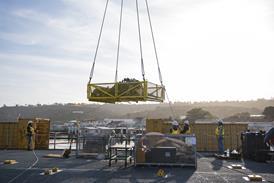Steve Nichols
Smoke in the cockpit is a pilot's nightmare and one of the biggest causes of air crashes according to official data.
Recent incidents involving a Swissair Flight 111 and ValuJet Flight 592 prove just how difficult it is for pilots to see what they are doing in such an emergency.
But CSE Engineering has the answer in the form of its emergency vision assurance system (EVAS).
It is the only US Federal Aviation Administration tested and certified device that allows pilots to see vital instruments, read emergency checklists and view the flightpath out of the windows, regardless of how much smoke is in the cockpit.
Bert Werjefelt, president of Visionsafe says: "Oxygen masks and smoke goggles do not help you see outside the aircraft or view your vital instruments.
"They only protect your breathing and eyes from the toxic smoke while you sit helplessly, unable to see.
"Opening the window may allow you to stick your head out, but it doesn't evacuate the smoke. You still can't see the instruments or through the windshield."
In FAA tests, a Boeing 737 repeatedly landed safely after a simulated in-flight fire at night. With EVAS, the FAA test pilots landed the aircraft with no problems, even though the cockpit smoke was so thick they couldn't see their hands in front of their faces.
The US National Transportation Safety Board concluded after the ValuJet 592 accident that emergency cockpit vision devices might have potential safety benefits in some circumstances and formally recommended the FAA look at "cockpit emergency vision technology".
Most passengers and pilots are unaware that no aircraft flying today has been tested or certified with continuous smoke in the cockpit. If they were they might be putting more pressure on the authorities to consider mandatory use of EVAS.
Source: Flight Daily News























